Whether you want to upgrade your RAM, learn what CPU socket your motherboard has, understand the overall expansion capability of your motherboard, or simply want to troubleshoot an issue, you would like to know its make and model. Fortunately, there are several methods to check what motherboard you have.
You can tell what motherboard you have through several ways, including physically inspecting the labels, using services and utilities WITHIN the operating system, and ordering trusted and free third-party software.
In the following text, I will talk in detail about the different methods you can use to check the make and model of your motherboard.
TABLE OF CONTENTS
How to Check What Motherboard You Have?
There are four easy methods to figure out the make and model of your motherboard:
- Checking Motherboard Make and Model Through Physical Inspection
- Checking Using System Information
- Checking Using Command Prompt
- Checking Using CPU-Z Third-Party Software
1. Checking Motherboard Make and Model Through Physical Inspection
If you have a desktop, one of the easiest ways to check what motherboard you have is through physical inspection.
Desktop motherboards have evident labels for their various parts and have the make and model clearly inscribed on them.
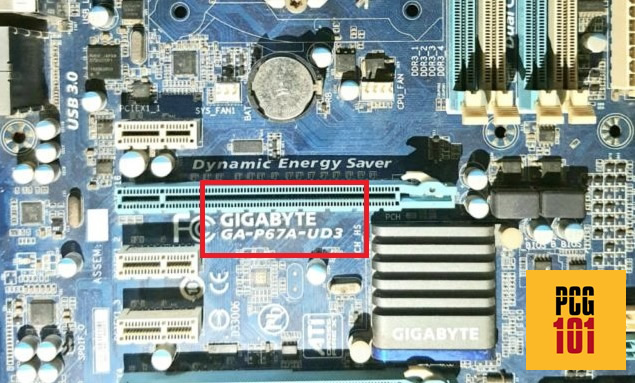
The only small frustration here would be actually opening up the PC case.
Of course, this method is only reasonable and can work for a desktop. For laptops, this method may not work.
Laptops are difficult to open up for a physical inspection and are not as clearly labeled as desktop motherboards.
2. Checking Using System Information
One of the easiest ways to check what motherboard you have within the operating system is by using the System Information utility.
In Windows 10, type “System Information” in the “Search Bar” and click on the application.
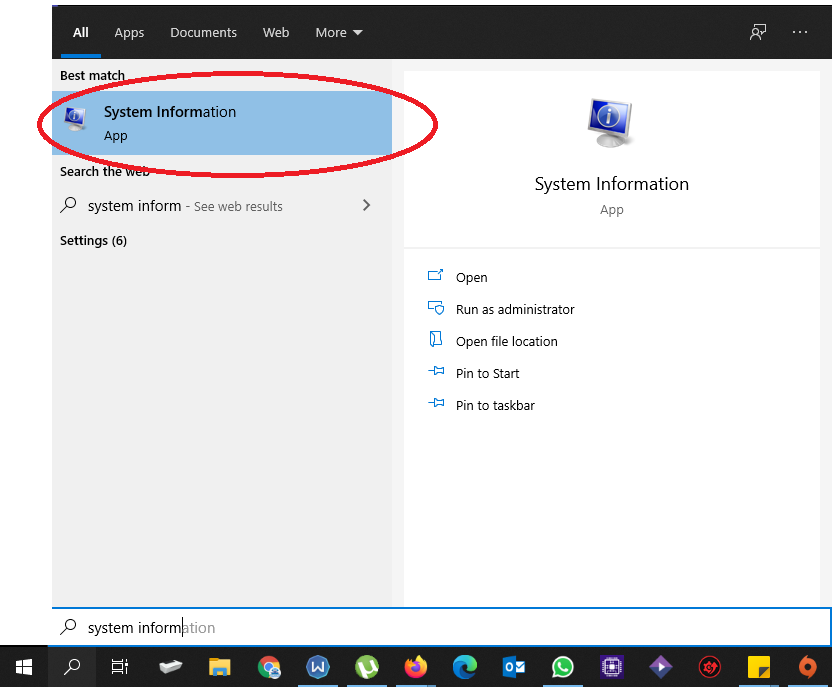
This should open up the System Information window as shown below:
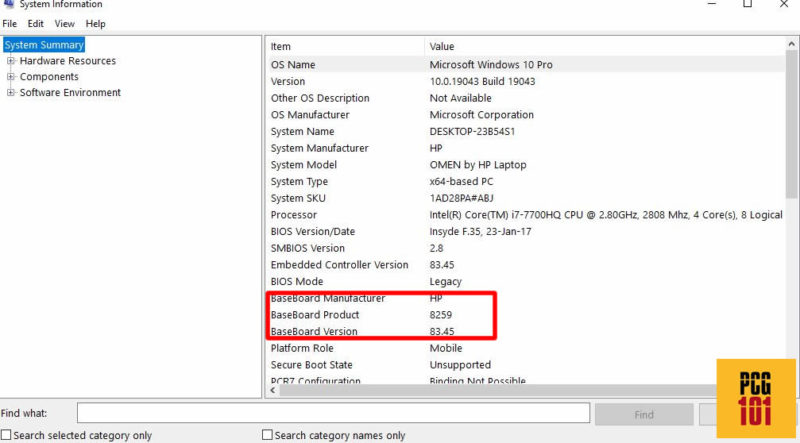
In the “System Information” window, the following are the important fields to take note off:
- Baseboard Manufacturer: This shows the manufacturer or the make of the board. In this case, it is HP.
- Baseboard Product: This shows the model name/number of the motherboard. If you have a Desktop, this field should tell you your exact model, i.e., Gigabyte GA-P67A-UD3. If you have a laptop, this field would be vague and often display a number such as shown above, i.e., 8259.
- Baseboard Version: This isn’t a very important field, but it should help filter out the exact motherboard you have. This is particularly important if you want to replace your motherboard.
Also Read: What is Motherboard Revision
3. Checking Using Command Prompt
Using a command prompt to figure out what motherboard you have is also a very simple method.
On Windows 10, open “Command Prompt“ by typing it in the “Search Bar.”
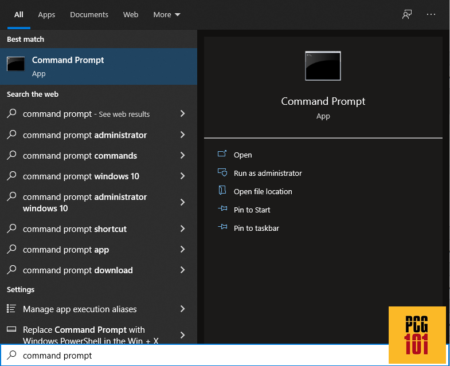
Once the “Command Prompt” window opens, type in the following command.
wmic baseboard get manufacturer, product, version

The resulting message you get will give all the information you need regarding what motherboard you have.
It would show you the same information we extracted from the “System Information” utility.
Also Read:
4. Checking Using CPU-Z Third-Party Software
And finally, if you want to figure out not just what motherboard you have but also get a comprehensive and detailed look at the insides of every PC component, I recommend using CPU-Z.
CPU-Z is a free and very popular software, almost an industry standard, for checking out the details of your system and its configuration.
Simply download and run the utility. Once it opens, head over to the “Mainboard” tab, and under the “Motherboard” section, look for the fields labeled as Manufacturer and Model.
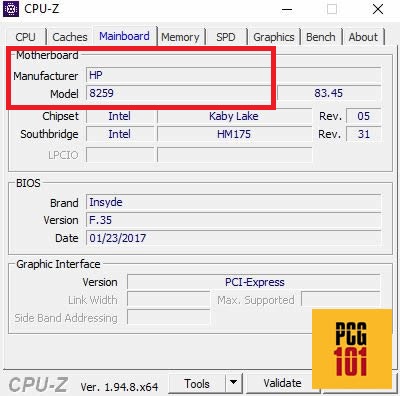
While in there, you can also check out the rest of the tabs to learn more about your CPU, RAM, and Graphics Card.
Also Read: How to Check Motherboard Socket?
Video Tutorial
If you prefer to watch the video tutorial instead, this video explains how to check the motherboard make, model, and chipset:
Motherboard Manufacturers and Chipsets
Knowing the names of the popular manufacturers and the chipsets should give you an idea about what kind of motherboard make and models to expect.
The popular desktop motherboard manufacturers are as follows:
- ASUS
- Gigabyte
- MSI
- ASRock
- EVGA
- Biostar
- Intel
The popular laptop motherboard manufacturer is as follows:
- HP
- Acer
- Dell
- Asus
- Lenovo
- Razer
- MSI
- Intel
Regarding the chipsets, it is easier to figure out the chipsets for desktop motherboards than for laptop motherboards.
Both Intel and AMD-based desktop motherboards have three popular chipsets for their consumer-grade motherboards.
Also Read: Can You Upgrade a Laptop Motherboard?
AMD has the A, B, and X series chipsets
- A series of chipsets, such as the A320 and A520, are for budget PCs.
- B series chipsets, such as the B450 and B550, are intended for mid-range builds.
- X series chipsets, such as the X470 and X570, are for enthusiasts and professional builds.
Intel also has three chipsets series for different purposes and budget ranges i.e. H, B, and Z.
- H/B series chipsets: With Intel, the line between H and B series chipsets is a bit thin as they can both be found in budget and mid-range PCs.
- Z series chipsets are the only chipsets that distinguish themselves from the rest, with them being the premium chipsets. Enthusiasts, gamers, and professionals covet z series chipsets such as Z590 and Z690.
Again, it is important to note that ALL desktop motherboard models have the chipset mentioned in their name. For instance, in the motherboard model “ASUS ROG Maximum Z690 Formula”, the Z690 identifies the chipset from its model name.
Also Read:
- How to Know if Graphics Card is Compatible With Your Motherboard?
- How to Check What Integrated Graphics Card Do I Have?
Figuring Out What Motherboard Chipset You Have on Your Laptop
Unlike desktop motherboards, laptops do not have the chipset mentioned in their name.
For instance, the model name HP 8259 tells you nothing about what chipset its features.
To figure out the chipset of your laptop’s motherboard, I recommend using CPU-Z.
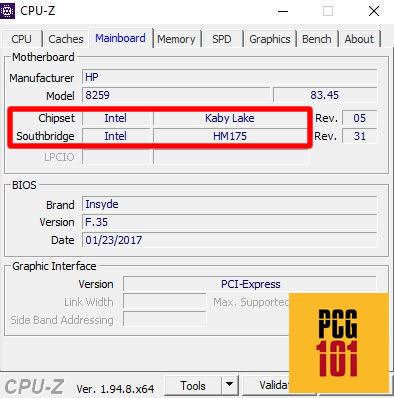
In the Mainboard tab of the CPU-Z utility, check for the fields labeled “Chipset” and “Southbridge.” The point to be noted here is that the Southbridge for modern systems is the same as the actual chipset.
Hence, Intel HM175 is the chipset used in the laptop above.
I can now use this information to look up its details online.
Also Read: How to Check What Graphics Card is Being Used?
Final Words
There are plenty of simple ways how to check what motherboard you have. You can use the physical inspection as well as utilities and services built within the operating system to check out the make and model of your motherboard.
Drop me a message below if you are confused or need help.
Also Read: How to Check Form Factor of Motherboard?
Frequently Asked Questions
1. Are there any online resources or tools that can help you identify your motherboard?
There are several online resources and tools that can help you identify your motherboard.
One popular option is the CPU-Z software, which provides detailed information about your motherboard’s model, manufacturer, and other specifications.
Another option is the Speccy tool, which also provides comprehensive system information, including details about your motherboard.
Additionally, some motherboard manufacturers have their own software that can help you identify their products.
2. What are some common methods for identifying motherboards in different computer brands and models?
The methods for identifying motherboards can vary depending on the computer brand and model. In some cases, the motherboard model may be printed on the motherboard itself or listed in the computer’s documentation.
You can also use system information tools like CPU-Z or Speccy to identify your motherboard.
Some computer manufacturers also provide a service tag or product number that you can use to look up the specifications of your computer and its components online.
3. What should you do if you are unable to identify your motherboard, or if you are unsure about its compatibility with your hardware?
If you are unable to identify your motherboard or if you are unsure about its compatibility with your hardware, there are several steps you can take.
First, you can try contacting the manufacturer of your computer or motherboard to ask for assistance. You can also search online forums and communities to see if others have had similar experiences and find potential solutions.
Additionally, if you are upgrading your hardware, it is always a good idea to check the compatibility of your components before making any purchases.

This is a lot of great information for beginning PC builders. I learned enough here to rehab two PC’s from a starting point of almost no knowledge. Of particular value to me were explanations of cable types, and of motherboard specifications. I encourage all readers to download and use CPU-Z, a source of learning material in itself. Thank you for the Website!